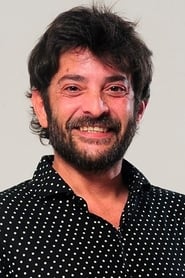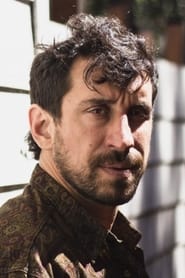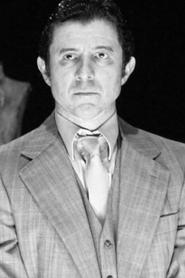
Ask Your Own Question
What is the plot?
The Heist of the Century: Complete Plot Narrative
The morning of Friday, January 13, 2006, breaks clear and sunny over Acassuso, a wealthy suburb nestled along the Buenos Aires coast. The neighborhood appears frozen in ordinary tranquility--tree-lined streets, elegant homes, the quiet rhythm of an affluent Argentine community preparing for the weekend. But beneath this veneer of normalcy, something extraordinary is about to unfold. In a modest martial arts studio somewhere in the city, Fernando Araujo stands before his students, moving through exercises with the casual grace of someone whose mind operates on multiple planes simultaneously. Fernando is a contradiction wrapped in linen--a bohemian philosopher-warrior who smokes marijuana between lessons and speaks in the language of new-age spirituality, yet harbors ambitions that burn with crystalline intensity. As he guides his students through their forms, his thoughts drift elsewhere. He has been contemplating something grand, something that will echo through history. "I want to do something big," he tells himself, the words carrying the weight of genuine conviction. "Something that will be remembered."
This is not the fantasy of an idle dreamer. Fernando Araujo possesses a particular kind of intelligence--the sort that sees patterns others miss, that recognizes vulnerabilities in systems designed to be impenetrable. He has spent months studying, planning, observing. And now, he is ready to recruit the team that will help him execute what he believes will be the most audacious bank robbery in Argentine history.
The Assembly of the Crew
Fernando's first and most crucial recruit is Luis Mario Vitette Sellanes, a man who exists in stark contrast to Fernando's free-spirited nature. Where Fernando is philosophical and improvisational, Luis Mario is a consummate professional criminal--disciplined, methodical, and deeply skeptical of anything that smells of recklessness. When Fernando first approaches him with the proposal, Luis Mario's reaction is one of immediate resistance. The plan seems insane: rob a bank in broad daylight, in the middle of a major city, during business hours, knowing full well that such an action will mobilize every police force in the region. Luis Mario has survived in the criminal underworld by avoiding exactly this kind of exposure. Yet something in Fernando's conviction, perhaps the sheer audacity of the vision itself, begins to wear down his defenses. Slowly, reluctantly, Luis Mario agrees to join, though not without expressing his concerns about the risks involved.
With Luis Mario on board, Fernando begins assembling the rest of his team. There is Sebastián, known to the crew as "the Martian" because of his eccentric personality and his almost alien approach to problem-solving. Sebastián is their technical specialist, the one who understands security systems with an almost intuitive grasp. He spends hours studying the blueprints of the Banco Río branch in Acassuso, memorizing every detail of its layout, every camera angle, every potential vulnerability. His wife, Claudia, watches him work with a mixture of concern and resignation, understanding that her husband is committed to something larger than their domestic life.
Alberto de la Torre, known as "Beto," joins as the crew member responsible for managing the hostages. He is calm under pressure, with an almost theatrical ability to project authority and menace without resorting to actual violence. His role will be crucial--he must keep the hostages compliant and frightened enough to obey, yet controlled enough that no one panics into doing something desperate.
The driver, Juan Alari, known as "the Paisa," is brought in to handle logistics and the getaway. He is meticulous about vehicles, routes, and timing--the kind of person who has already calculated seventeen different escape scenarios before the heist even begins.
There is also "the Doc," Mariano Argento, a quiet observer who seems to absorb information rather than generate it, yet whose presence provides a stabilizing influence on the group. And finally, there is "the Turk," De la Torre's wife, who becomes peripherally involved in the operation, aware of what her husband is planning but maintaining a degree of separation from the actual crime.
The Planning Phase: Genius in the Details
What distinguishes this heist from countless others is not merely its ambition but the meticulous, almost obsessive nature of its planning. Fernando and Luis Mario understand that the difference between success and catastrophic failure lies in the details--the small things that most criminals overlook or underestimate.
They begin by studying the SWAT Team manual on hostage negotiations. This is not a casual review but a deep, systematic analysis of police psychology, negotiation tactics, and the decision-making processes of law enforcement under pressure. They learn how negotiators think, what they respond to, what frightens them, what reassures them. They understand that the police will have protocols, and those protocols can be anticipated and manipulated.
But studying a manual is not enough. Fernando insists that the crew attend acting classes. This might seem absurd--criminals taking acting lessons--yet it reveals the sophistication of Fernando's thinking. He understands that during the heist, they will need to project confidence, authority, and credibility. They will need to convince hostages that they are willing to kill, without actually being willing to kill. They will need to convince police negotiators that they are serious, unpredictable, and dangerous. Acting class teaches them how to modulate their voices, control their body language, and project an emotional truth that may not be genuine.
The planning extends to the technical aspects of the robbery itself. Sebastián studies the bank's security system with the intensity of a scholar deciphering an ancient text. He identifies three critical vulnerabilities--three points where the system can be defeated through ingenuity rather than brute force. These solutions demonstrate what can only be described as undeniable genius. The crew will not simply smash and grab; they will exploit the very architecture of the security system itself, turning it into an instrument of their own success.
Fernando also makes a crucial strategic decision: the crew will use replica weapons. This is not a matter of cost or availability but of philosophy. Fernando understands that actual firearms introduce variables that cannot be controlled. A real gun can go off. A real gun can provoke a real response. Replica weapons, combined with psychological manipulation and the threat of violence, can achieve the same effect without the risk of actual bloodshed. This decision will later become a point of pride for the crew--proof that they accomplished something extraordinary without resorting to genuine violence.
The Day Arrives: January 13, 2006
The morning of the heist dawns clear and bright. Fernando and his crew move through the city with the calm of men who have rehearsed every step a thousand times in their minds. They know that in a few hours, they will either be wealthy beyond their current imagination or imprisoned for decades. There is no middle ground.
The Banco Río branch in Acassuso is a two-story building in an affluent neighborhood. It is a Friday, a day when the bank is busy but not chaotic, when the staff is thinking about the weekend, when vigilance might be slightly diminished. The crew arrives and enters the bank as if they belong there. They move with purpose but not urgency, blending into the ordinary rhythm of banking business.
Then, at a predetermined moment, the operation begins. Fernando and his team reveal themselves. They are armed, they announce, and they are taking control of the bank. The replica weapons are displayed with convincing authority. The staff and customers freeze in that moment of shock that precedes panic. But panic does not come because the crew is prepared for this moment. They project calm, competence, and an absolute certainty that they are in control.
Hostages are gathered--twenty-three in total, including bank employees and customers. They are moved to a secure area within the bank, kept under watch by Alberto and the other crew members. The hostages are frightened, as intended, but they are not harmed. The crew makes it clear through words and actions that cooperation will be rewarded with safety, while resistance will be met with consequences. It is a delicate psychological balance, and the crew maintains it with practiced precision.
Meanwhile, Fernando and Sebastián move deeper into the bank's interior. They begin the process of accessing the safety deposit boxes. This is where the real work begins. The bank contains dozens of these boxes, and within them lies the treasure they have come for: millions of dollars in cash, precious jewelry, and heavy gold bullion bars. Sebastián's technical expertise proves invaluable as he works to unlock the boxes, using the vulnerabilities he identified during months of planning. The locks begin to yield. Box after box opens, revealing the accumulated wealth of Acassuso's most affluent residents.
But even as they work, the outside world is responding to the robbery. Someone has triggered an alarm. Police are being dispatched. The quiet suburb of Acassuso is about to become a war zone of negotiation and psychological warfare.
The Siege Begins: Police Response
Within minutes, the area surrounding the Banco Río branch is transformed. Police vehicles arrive, their sirens wailing through the streets. Officers establish a perimeter around the building. The quiet, sunny Friday morning becomes charged with tension and the machinery of law enforcement mobilization.
At police headquarters, Miguel Sileo receives the call. Sileo is a negotiator of considerable experience and skill--a wise, solid professional surrounded by lesser minds who defer to his judgment. He is told that there is an active bank robbery in progress in Acassuso, that hostages have been taken, and that the robbers are armed and barricaded inside the bank. Sileo's mind immediately begins calculating the variables: the number of hostages, the number of robbers, the layout of the building, the psychological profile of the perpetrators. He knows that the next few hours will determine whether this situation ends in bloodshed or resolution.
Sileo arrives at the scene and takes command of the police response. He establishes a command center, sets up communication lines, and begins the process of establishing contact with the robbers inside the bank. He does not know yet that he is facing opponents who have studied his playbook, who understand his psychology as thoroughly as he understands theirs.
Inside the bank, Fernando receives word that the police have arrived and are surrounding the building. He communicates this information to his team via walkie-talkie. The operation has entered its critical phase. They are no longer simply robbers; they are now hostage-takers in a standoff with law enforcement. The stakes have escalated dramatically.
Fernando makes a crucial decision: he will use the police presence to his advantage. He instructs one of his crew members to approach a cashier and, via walkie-talkie communication, coerce the cashier to fill a bag with money. The cashier, terrified and compliant, does as instructed. Cash is stuffed into bags--thousands of dollars, then tens of thousands. The robbery is proceeding even as the police surround the building.
When police officers begin to approach the bank's entrance, Fernando moves to intercept them. He positions himself where he can be seen by the officers outside. He holds a hostage, making it clear through gesture and implicit threat that if the police attempt to enter, the hostage will die. It is a moment of pure psychological theater--the threat is credible because the police cannot know for certain that the weapons are replicas. The officers halt their advance. They retreat. The message has been received: any attempt to storm the bank will result in bloodshed.
Fernando returns inside and informs his team that phase one of their operation is complete. The police have been deterred. The crew can continue their work.
The Negotiation: A Battle of Wills
As Fernando and Sebastián continue unlocking the safety deposit boxes, gathering cash and gold, the situation outside intensifies. Miguel Sileo establishes communication with the robbers. He attempts to open a dialogue, to understand their demands, to find a path toward negotiation and resolution.
But the robbers do not respond directly to Sileo. Instead, Mario Vitette Sellanes takes the phone--the phone that was confiscated from one of the hostages. Mario has been trained by Fernando in negotiation tactics, and he is about to put that training to use. When Mario speaks to Sileo, his voice carries authority and credibility. He makes demands: he wants to speak with the district attorney. He wants assurances that the crew will be allowed to leave safely. He threatens that if these demands are not met, hostages will be executed.
Sileo listens carefully. He hears in Mario's voice the tone of someone who is serious, who has thought through the situation, who is not acting on impulse or desperation. Sileo agrees to Mario's demands. He will arrange for the district attorney to be contacted. He will work toward a resolution. But Sileo also begins to calculate his own strategy. He knows that time is on the police's side. The longer the standoff continues, the more likely it becomes that the robbers will make a mistake, that emotions will escalate, that the situation will become unstable.
Inside the bank, Fernando has anticipated this very dynamic. He knows that the police will attempt to use time as a weapon, that they will try to wear down the robbers' resolve. He has prepared for this contingency. He instructs Mario to request that the district attorney be brought to the scene, and to request that this process be given time. One hour, Mario tells Sileo. Give us one hour to arrange everything.
Sileo agrees, though he does so with the knowledge that he is being manipulated. He is aware that the robbers are buying time, but he also understands that buying time is a sign of rational thinking, not desperation. A truly dangerous, unstable criminal would not negotiate for time; he would act impulsively. The fact that the robbers are negotiating suggests that they have a plan, that they believe they can escape, that they are thinking strategically.
While Mario negotiates with Sileo, Fernando and Sebastián continue their work. Box after box opens. The accumulation of wealth grows. They are now gathering not just cash but also precious jewelry--diamonds, emeralds, rubies--and heavy gold bullion bars. The weight of their prize is becoming substantial. They will need the truck to carry it all.
But then, a complication arises. One of the hostages--an elderly woman--suddenly realizes that her mobile phone is ringing. It is her birthday, she announces. Someone is calling to wish her happy birthday. The situation, which has been tense and controlled, suddenly becomes absurd. The robbers, hearing this news, react with a mixture of exasperation and dark humor. Fernando scolds one of the hostages for not singing "Happy Birthday" with sufficient enthusiasm. It is a moment that captures the surreal nature of the situation--a bank robbery interrupted by birthday wishes, criminals enforcing the social obligation of celebratory singing. The moment passes, but it will later become one of the most memorable and bizarre details of the entire heist.
The Rooftop Gambit
As the negotiation continues, Fernando detects movement on the roof of the bank. The police, despite their agreement to negotiate, have deployed snipers to the rooftop of an adjacent building. They are positioning themselves for a potential assault. Fernando, who has anticipated this very move, immediately alerts Mario.
Mario receives the police chief's call and, following Fernando's instructions, demands that all personnel be withdrawn from the rooftop. He threatens that if the police do not comply, hostages will be executed. The police chief, faced with this ultimatum and uncertain whether the robbers will follow through, makes the decision to withdraw the visible personnel from the rooftop. The snipers are pulled back.
But Sileo, demonstrating his own cunning, does not withdraw all of his assets. He discreetly deploys two snipers on the building adjacent to the bank, positioning them where they cannot be easily detected. He is playing his own psychological game now, maintaining the appearance of compliance while preparing for the possibility of a violent resolution.
Meanwhile, inside the bank, Fernando and Sebastián have successfully unlocked numerous storage units. The vault is now open to them. They gather considerable cash, gold, and jewelry. The scale of their haul is becoming apparent--they are not stealing thousands or even hundreds of thousands. They are stealing millions. The safety deposit boxes have yielded a treasure beyond even their optimistic projections.
The Revelation and the Escape
Then comes the moment that will define the entire operation. Fernando makes a deliberate choice. He takes the replica weapons--the fake guns that have served as the psychological foundation of their entire operation--and he leaves them in the vault. This is not an accident or an oversight. It is a calculated decision, a message. When the police eventually discover the weapons, they will understand that the robbers never intended to harm anyone, that the entire operation was built on psychological manipulation rather than genuine violence.
Mario, having completed his negotiations with the police chief and the district attorney, receives the signal from Fernando. It is time to leave. The crew gathers their bags of cash, jewelry, and gold. They move toward the exit of the bank. The hostages, who have been kept under watch throughout the ordeal, are left behind, unharmed. Not a single person has been shot. Not a single person has been seriously injured. The robbery has been accomplished through intelligence and psychology rather than violence.
The crew exits the bank and moves toward their getaway vehicle. The police, observing their departure, face a critical decision. Do they attempt to apprehend the robbers as they flee, risking a violent confrontation? Or do they allow them to escape, maintaining the negotiated resolution that has kept the hostages safe?
Sileo, the police negotiator, makes the decision to allow the robbers to leave. He has negotiated a resolution in which no one has died, no one has been seriously harmed, and the hostages have been released safely. From a law enforcement perspective, this is a successful outcome, even if it means the robbers escape with their prize.
Fernando and his crew reach their getaway truck. The Paisa, who has been waiting with the vehicle, starts the engine. The truck pulls away from the bank, moving through the streets of Acassuso. Behind them, police vehicles begin to follow, but the pursuit is not aggressive. It is almost perfunctory, as if everyone involved understands that the real drama has already concluded.
The crew drives to a secure location. Once they are certain they have not been followed, they begin the process of destroying evidence. Documents are burned. Communication devices are disposed of. Any trace that might connect them to the crime is systematically eliminated.
Finally, they arrive at Alberto's house. It is a modest dwelling, unremarkable in every way. Inside, the crew begins the process of dividing their spoils. The cash is counted--approximately fifteen to nineteen million dollars, depending on which account one believes. The jewelry is appraised. The gold is weighed. The division is done carefully, equitably. Each member of the crew receives their share, a fortune that will transform their lives.
The Aftermath: Success and Its Consequences
Months pass. The crew members disperse into their new lives. They have achieved what they set out to accomplish. They have pulled off what many consider to be one of the most famous and intelligent bank heists in Argentine history. They are wealthy beyond their previous imagination. They have access to resources, opportunities, and pleasures that were previously unimaginable.
Yet wealth, as it so often does, brings its own complications. The psychological bonds that held the crew together during the planning and execution of the heist begin to fray under the weight of their newfound prosperity. Temptations emerge. Old patterns reassert themselves.
Alberto, enjoying his newfound wealth, begins to indulge in behaviors that his marriage cannot accommodate. He takes a lover. His wife, Magela, discovers his infidelity. The domestic tranquility that Alberto had presumably hoped to achieve through the heist crumbles. His marriage fractures. The success of the robbery has not brought him happiness; it has merely provided him with the resources to pursue his own destruction more efficiently.
The film ends with the crew members reflecting on what they have accomplished and what they have lost. They are wealthy, yes, but they are also isolated, separated by the very success that was supposed to unite them. Fernando, the mastermind who conceived of the entire operation, is left to contemplate the strange irony of his achievement. He wanted to do something that would be remembered, and he has succeeded beyond his wildest expectations. The Banco Río heist of January 13, 2006, will indeed be remembered as one of the most audacious and intelligent bank robberies in Argentine history. But the price of that success--the fractured relationships, the paranoia that must accompany the knowledge that they are fugitives, the emptiness that often follows the achievement of one's greatest ambition--is a cost that no amount of money can fully compensate for.
The final scenes show the crew members in their new lives, enjoying material comforts but haunted by the knowledge of what they have done and what they have sacrificed. They have won their heist, but they have lost something more valuable in the process--the simple, uncomplicated existence of ordinary life. The film suggests that the true heist of the century was not the robbery itself but the theft of their own futures, exchanged for a fortune that can never truly be enjoyed in peace.
What is the ending?
In the ending of "The Heist of the Century," the heist is successfully executed, but the aftermath leads to unexpected consequences for the characters involved. The main characters face the repercussions of their actions, with some escaping and others facing justice.
As the film draws to a close, the tension escalates. The heist team, having meticulously planned their operation, executes their plan with precision. They manage to steal a significant amount of money from a bank in Buenos Aires, showcasing their skills and teamwork. However, as they make their escape, the police are alerted, and a chase ensues.
In the final scenes, the characters are shown grappling with the fallout of their choices. Some members of the team manage to evade capture and disappear into the shadows, while others are apprehended by law enforcement. The emotional weight of their decisions hangs heavy, as they reflect on the risks they took and the lives they disrupted.
The film concludes with a sense of ambiguity regarding justice and morality, leaving the audience to ponder the true cost of their actions.
As the final act of "The Heist of the Century" unfolds, the atmosphere is thick with tension and anticipation. The heist team, led by the charismatic and cunning mastermind, prepares for the culmination of their elaborate plan. Each member is acutely aware of the stakes involved, their hearts racing with a mix of excitement and fear.
Scene 1: The Heist Execution The scene opens with the team in their positions, each member donning masks and gear, their faces a mix of determination and anxiety. The camera pans over the bank's exterior, capturing the bustling streets of Buenos Aires, oblivious to the chaos about to unfold. As they breach the bank, the sound of alarms blaring fills the air, creating a cacophony that heightens the urgency of their mission. The team moves with precision, each member executing their role flawlessly, showcasing their expertise and the trust they have in one another.
Scene 2: The Escape With bags filled with cash, the team makes their way to their escape vehicles. The adrenaline surges as they hear the distant wail of police sirens. The chase begins, and the streets become a blur of flashing lights and screeching tires. The camera captures the frantic expressions of the team as they navigate through the city, their hearts pounding in their chests. The tension is palpable, and the stakes have never been higher.
Scene 3: The Aftermath As the dust settles, the team regroups in a safe house, their faces illuminated by the dim light of a single bulb. They share a moment of triumph, but it is quickly overshadowed by the reality of their situation. The weight of their actions begins to sink in, and the emotional toll is evident. Some members express doubt and fear about what lies ahead, while others remain resolute, believing they can outsmart the authorities.
Scene 4: The Consequences In the following scenes, the narrative shifts to the aftermath of the heist. The police, having pieced together the events, begin to close in on the team. The tension escalates as members of the crew are captured one by one, their dreams of freedom slipping away. The camera lingers on their faces, capturing the despair and regret that washes over them as they realize the gravity of their choices.
Scene 5: The Final Moments In the film's closing moments, the audience is left with a sense of ambiguity. Some members of the team manage to escape, disappearing into the shadows of the city, their fates uncertain. Others are shown in handcuffs, facing the consequences of their actions, their expressions a mix of resignation and defiance. The final shot lingers on the mastermind, who stands alone, contemplating the cost of their ambition. The screen fades to black, leaving viewers to grapple with the moral complexities of the characters' choices and the nature of justice.
In summary, the ending of "The Heist of the Century" encapsulates the thrill of the heist and the inevitable fallout, showcasing the emotional and moral dilemmas faced by each character. The fates of the main characters vary, with some finding freedom while others confront the reality of their actions, ultimately leaving the audience to ponder the true meaning of success and failure.
Is there a post-credit scene?
In "The Heist of the Century," there is no post-credit scene. The film concludes its narrative without any additional scenes after the credits roll. The story wraps up with the resolution of the heist and the fates of the main characters, leaving the audience with a sense of closure regarding the events that transpired throughout the film. The focus remains on the intricate planning and execution of the heist, as well as the emotional and moral dilemmas faced by the characters, rather than teasing any future developments or sequels.
Who are the main characters involved in the heist?
The main characters involved in the heist include a group of skilled criminals led by a mastermind named 'El Profesor', who orchestrates the elaborate plan. Key members of the team include a tech expert, a safecracker, and a getaway driver, each bringing their unique skills to the operation.
What motivates the characters to participate in the heist?
Each character has their own motivations for participating in the heist. Some are driven by financial desperation, while others seek revenge or a sense of thrill. The emotional stakes are high, as they each have personal histories that intertwine with their reasons for taking such a significant risk.
What specific challenges do the characters face during the heist?
During the heist, the characters face numerous challenges, including unexpected security measures, internal conflicts within the team, and the pressure of law enforcement closing in. Tensions rise as they must adapt their plan on the fly, leading to moments of panic and doubt.
How does the heist unfold step by step?
The heist unfolds in a meticulously planned sequence, starting with reconnaissance, followed by the infiltration of the target location. Each step is fraught with tension, as the team must execute their roles flawlessly while dealing with unforeseen complications, such as alarms being triggered and the arrival of police.
What are the key turning points in the heist that change the course of events?
Key turning points in the heist include a betrayal within the team, which leads to a critical moment of distrust, and a sudden change in the security protocols that forces the team to improvise. These moments create a ripple effect, altering their original plan and escalating the stakes dramatically.
Is this family friendly?
"The Heist of the Century" is a heist film that contains several elements that may not be suitable for children or sensitive viewers. Here are some potentially objectionable aspects:
-
Violence: There are scenes depicting confrontations and physical altercations that may be intense or unsettling for younger audiences.
-
Criminal Activity: The central theme revolves around a heist, which involves planning and executing a robbery. This may not be appropriate for children as it glamorizes criminal behavior.
-
Tension and Suspense: The film builds significant tension, with moments that may evoke anxiety or fear, particularly during high-stakes situations.
-
Mature Themes: The narrative explores themes of betrayal, desperation, and moral ambiguity, which may be complex for younger viewers to understand.
-
Language: There may be instances of strong language that could be considered inappropriate for children.
These elements contribute to a tone that may be more suitable for older teens and adults rather than a family-friendly audience.













































